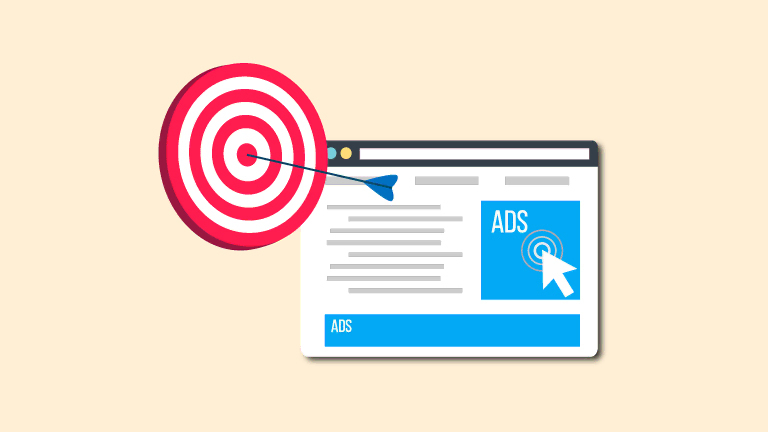Increasing website conversion: my guide to 2024

A majority of potential customers today learn about a company through the Internet. In fact, the website plays a crucial role in deciding whether or not a customer buys a service or product from the company. Whether it’s generating more online purchases, requesting quotes or collecting online data, it’s important to encourage website visitors to take these actions.
A successful action is also called conversion. The higher a conversion rate, the more visitors have taken action on the website. Here I further explain how to increase the conversion rate of a website .
Importance of website conversion
When referring to a website conversion, it refers to visitors to the website who have taken a desired action. In the case of a construction company, this may be requesting a quote or in the case of a web shop, it may be purchasing products. It is important to keep a conversion rate high.
In fact, this shows that sales are being successfully brought in, that the right target audience is being recruited, and that the website is highly visible on search engines. All in all, a high website conversion rate means that a website is therefore effective.(1)

Increasing a website’s conversion rate in a nutshell
No time for a long article? No problem. Watch the video below for a summary of this article.
Understand the target audience
Achieving a high conversion rate does not happen overnight. It all starts with defining the target audience. This includes:
- What visitors does a Web site need?
- What are the challenges of the target audience?
- What are the demographics of the target audience?
- What is the target customer (B2B)?
- What are the needs of the target audience?
Ideally, you engage with your target audience and really get to know them. So I always say, the best marketers have all done a bit of sales within the organization (or something with product development).
Want to read more about increasing website conversion?
- Conversion rate guide of 2024
- Conversion
- What does a CRO specialist do?
- Conversion rate optimization for web shops
- The psychology of search intent
- The influence of SEO on UX
Conducting a target group analysis
Conducting a group analysis is an important part in identifying the ideal customer (the ICP). A target audience analysis looks at geographic data, think age, location, gender, and psychographic information, such as buying habits, interests and lifestyle.
The purpose of this analysis is to get a clear picture of what kind of target audience to reach in marketing. Thus, an online marketing plan is fully customized. For example, think about style, language, content and offers, all of which attract the attention of the target audience in the right way. (2)
Understanding user intent
Usage intent indicates what a visitor hopes to find or accomplish after they submit a query on a search engine.
This intent can be information focused, but it can also be transactional, navigational or another interest. All in all, you can think of the following intentions for website visitors:
- informative;
- educational;
- commercial.
By understanding the intent behind visitors, the website is made easy to find for the right audience. Thus, this contributes to a higher website conversion rate, as it helps visitors find exactly what they were looking for on the website.
In doing so, you must provide the right content at the page level by type of intent. I always try to think about a specific customer journey per (landing) page.
Importance of intuitive design
A user-friendly website is intuitive. That is, users instinctively know how to navigate the Web site. The clearer and more intuitive the website is, the less likely a visitor will drop out. This starts with a clear and attractive home page, but continues through the final steps of a purchase process.
Making the page layout logical, placing clear action buttons and using good communication on the pages prevents visitors from feeling frustration while using the website. Thus, they do not drop out before they have made a conversion.(3)
Optimizing the user experience
User experience is also often referred to as UX. A positive user experience is emphasized through a number of actions, including engaging content, clear communication, uncluttered layout and clear interactions.
The user experience should be tested from time to time to ensure that it still meets the visitor’s needs. There are several points to consider when conducting a test. Examples include fast loading time, usability on any type of device, a simplified checkout process and an uncluttered website design. It is important to receive feedback around these themes from users to find out what areas need improvement.
Creating engaging content
A website needs quality content. Content includes an interesting product description, a quality video, clear photos of a product and clear infographics. The more visually appealing the content is, the more the visitor’s curiosity is piqued.
Attractive content is an important element of a Web site. After all, quality content exudes personality, originality and confidence. In many cases, it is even the content that causes a visitor to choose the company over another competitor.
To give an example; among the conversions I get through this website, some individuals have already read more than 20 articles of mine and are well versed in the way I advise. During the sales process (which is then often relatively short), I can convince them of my value more quickly (or indeed, that convincing is no longer necessary).
Ensure that you achieve the same position for your own organization as a thought leader within the market. This can only happen with truly quality content and new insights.
Making content attractive to the target audience
While creating content for the website, it is important to consider the target audience and what their interests are. The goal is for the content to respond to the interests of the target audience.
This is because it keeps a visitor on the website and ensures successful conversions. Identify the needs, behaviors and preferences of the target audience. Then try to incorporate this into both written content and visual content.
Conversion optimization techniques
There are several conversion techniques that are effective in increasing website conversion rates. Using the right strategy increases the amount of visitors who perform desired actions on the website.
Call-to-action
The first element I’d like to highlight is a call-to-action. This is an indispensable element on a Web site. Using a call-to-action, visitors are encouraged to buy a product, sign up for the newsletter or request a quote. A good call-to-action is visually striking and is powerfully written.
Make sure it is placed in a tactical location. Think, for example, at the end of a blog post or next to relevant content. When a call-to-action meets these requirements, it will contribute to an increase in the conversion rate.

Conversion paths and funnels
The term conversion path represents the journey a visitor takes on the Web site to perform a desired action. For example, this could be the process from a product to check-out or the journey from the home page to signing up for the newsletter. Making the conversion path simplified increases the likelihood of a successful action.
Many visitors drop out as soon as the navigation is not intuitive or involves too many steps. In addition, make sure that a visitor is guided to the desired path by design from the beginning. Test out different visual elements to analyze which produces the desired results.
Use of analytical tools
This brings me to the next point: the use of analytics tools. To increase website conversion rates, it is critical to understand and analyze visitor behavior. This will help identify where there is room for improvement.(4)
Data analysis for conversion improvement
Data analytics is an excellent way to better understand how visitors navigate through the Web site. Several analysis tools are available to help collect data and then develop reports.
Google Analytics, for example, is one of them. In a data analysis, we need to look at user flow. How long do visitors stay on the website? What are the best visited pages? Do visitors drop out while completing an action? And so on. Using this data, specific adjustments are made that then contribute to higher conversion rates.
A/B testing and user testing.
A/B testing is a testing method in which two different versions of a Web site are tested. Version A may only have a different landing page than Version B, or Version A and B may have completely different layouts. The two versions are being tested simultaneously by visitors. Data is then collected for both versions, focused on user behavior.
A/B testing is an effective way to find weaknesses in a Web site. By simply comparing the data from the two versions, it identifies which elements contribute to an optimal user experience and the best conversion rate.
More visitors for more conversion
Getting more conversions on the website also means getting more traffic to the website. Below I briefly explain some of the ways.
- search engine optimization (SEO);
- paid search advertising (PPC);
- social media marketing (advertising and organic);
- content marketing;
- email marketing;
- affiliate marketing;
- influencer marketing.
I always think about a 1 + 1 = 3 effect. If you can increase both website conversion and traffic to the website, then you are creating this effect yourself.

Mobile optimization
The Internet is increasingly being accessed from a cell phone rather than a computer. So it is essential that a website is optimized for mobile devices to offer the best user experience for these visitors as well.
Importance of mobile-friendly design
A mobile or tablet has a very different format than a desktop. It is therefore important that a website is adapted for this mobile format.A mobile-friendly website automatically adapts to the screen size, has a fast loading time, has a clear layout and is clearly readable. The more mobile-friendly a website is, the higher its conversion rate becomes and the better it ranks on the search engines.
Customize for different devices
With an array of different mobile devices, it is important that the website be optimized for each screen size and operating system. Consider, for example, different smartphone, tablet and also smartwatch formats.
Responsive design ensures that the website automatically adapts to the size and operating system of the visitor. Make sure the website is thoroughly tested to ensure such a seamless experience on every device.
Summary
To increase website conversion rates, both technical improvement and content optimization must be taken into account. Perfecting content on the website for every type of device, to employing SEO for better visibility, to running campaigns on social media, each step has a major impact on improving conversion rates. In addition, it is important to continuously analyze and reflect on what can be improved.
The user-friendliness of a website plays a crucial role in how good or bad a website’s conversion rate is. By striving for an optimal user experience, through relevant content, clear communication and optimization for each device, visitors are encouraged to perform desired actions.
- What is Website Conversion? [+ How to Improve It]. (2024, March 6). https://www.hotjar.com/blog/website-conversion/
- Carmicheal, K. (2022, Oct. 5). Target Audience: How to Find Yours [+ 5 Campaign Examples]. HubSpot. https://blog.hubspot.com/marketing/target-audience
- Laja, P. (2022, December 20). Intuitive Web Design: How to Make Your Website Intuitive to Use. CXL. https://cxl.com/blog/intuitive-web-design-how-to-make-your-website-intuitive-to-use/
- The 12+ Best Web Analytics Tools to Improve Your Site. (s.d.). https://www.hotjar.com/web-analytics/tools/






